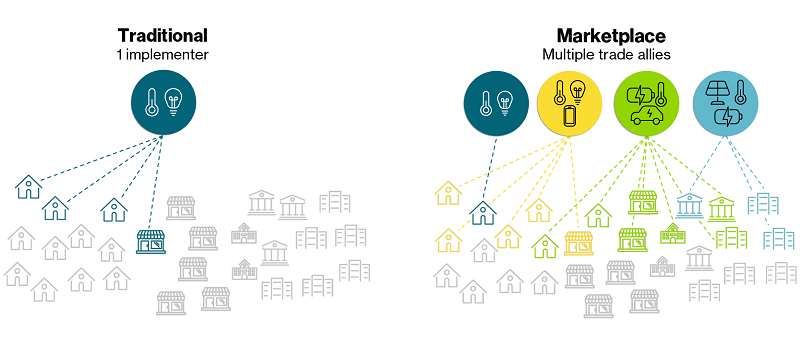 Search
Search


This article was authored by Sam Crawford, Robyn Link, and Latisha Younger-Canon and first appeared in the American Council for an Energy Efficient Economy (ACEEE) October 2021 Newsletter.
Utility energy efficiency and demand side management (DSM) programs as we know them are in their twilight years. As lighting and other measures reach peak saturation, utilities face serious challenges in meeting associated regulatory requirements. Meanwhile, the growth of distributed solar, electric vehicles (EVs), and other distributed energy resources (DER) has driven growing needs for load shaping to balance new supply and loads, and regulators are shifting focus from energy savings to other outcomes including cost-effectiveness and carbon emissions savings. With thoughtful and targeted intervention, our industry can avoid having to rage against the dying of the light.

Despite the success of traditional programs and the potential grid value new DER can provide, utilities have struggled to drive successful implementation due to issues including the following:

Market-based P4P approaches offer several key elements to address these challenges and drive success. With P4P, utilities can (1) align incentives with grid value, (2) mobilize the market, and (3) deliver tailored solutions to customers. P4P incentives may be directly tied to utility-avoided costs, encouraging adoption and operation of resources that best align with utility needs. Limited initial utility investment is required, and markets can be scaled up over time to address new needs, resources, and customer segments.
P4P incentives mobilize trade allies to deliver savings, and a non-prescriptive structure offers room for innovation, creating opportunities for whole-building solutions that deliver deeper, more cost-effective savings. Rather than tying themselves to one implementer, utilities can leverage the capabilities of many trade allies—the best ones that drive the most adoption and savings will rise to the top.

Diverse offerings from a network of trade allies increase customer choice, while P4P incentives encourage more tailored solutions to maximize customer value. Innovative business models can mitigate cost barriers and enable customers—including low income, multifamily, small business, and other challenging customer segments—to more readily adopt new solutions.
Utilities have an opportunity to become the orchestrator of clean energy solutions and support customers in developing individualized journeys to cleaner, more affordable energy while supporting grid needs.
Create a Marketplace. The P4P marketplace starts with defining the desired utility outcomes and their value. The utility may then set corresponding incentive levels for one or more measurable target outcomes (i.e., baseload shaping, peak reduction, and decarbonization), which may be explicitly structured to achieve cost-effectiveness targets. Alternatively, a procurement process (e.g., reverse auction) may be used to define incentives.
Development of the trade ally network is also key to establishing a P4P marketplace that delivers desirable outcomes for the utility and its customers. Utilities can leverage the marketplace function to attract top solution providers to drive innovation and improve customer choice. The marketplace incentive mechanism rewards players for actual performance at the meter, which encourages solution flexibility to meet customers and utilities energy needs and reduces investment and delivery risk.
Remove the Barriers. In addition to taking non-prescriptive approaches and allowing access to multiple trade allies, the marketplace can remove barriers by actively equipping trade with the following resources to drive customer acquisition:
Engage the Community. The marketplace may enable customers and the local workforce to navigate offerings and support equitable access through customer support, equity incentives, and workforce development.
Given the saturation of existing energy efficiency and DSM programs, changing program objectives, new DER, and evolving customer needs, the structure of energy efficiency and DSM programs must adapt accordingly. A P4P marketplace aligns the incentives between the utility, trade allies, and customers. Furthermore, it shifts away from applying averages to all measures and customers. Such a shift unlocks greater potential to accelerate cleaner, more equitable energy solutions, providing a significant opportunity to answer the challenges utilities face now and in the future.
Guidehouse is a global AI-led professional services firm delivering advisory, technology, and managed services to the commercial and government sectors. With an integrated business technology approach, Guidehouse drives efficiency and resilience in the healthcare, financial services, energy, infrastructure, and national security markets.